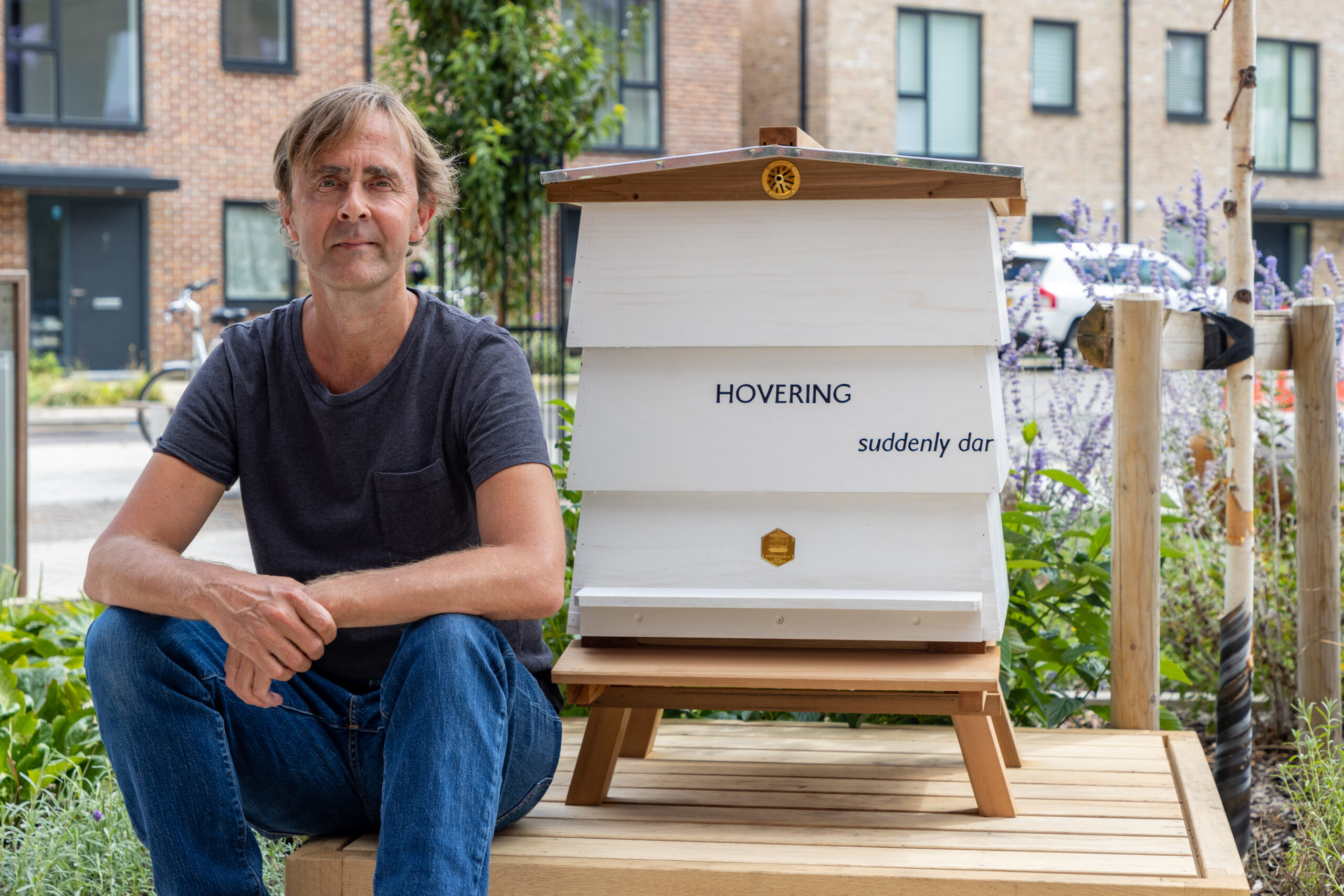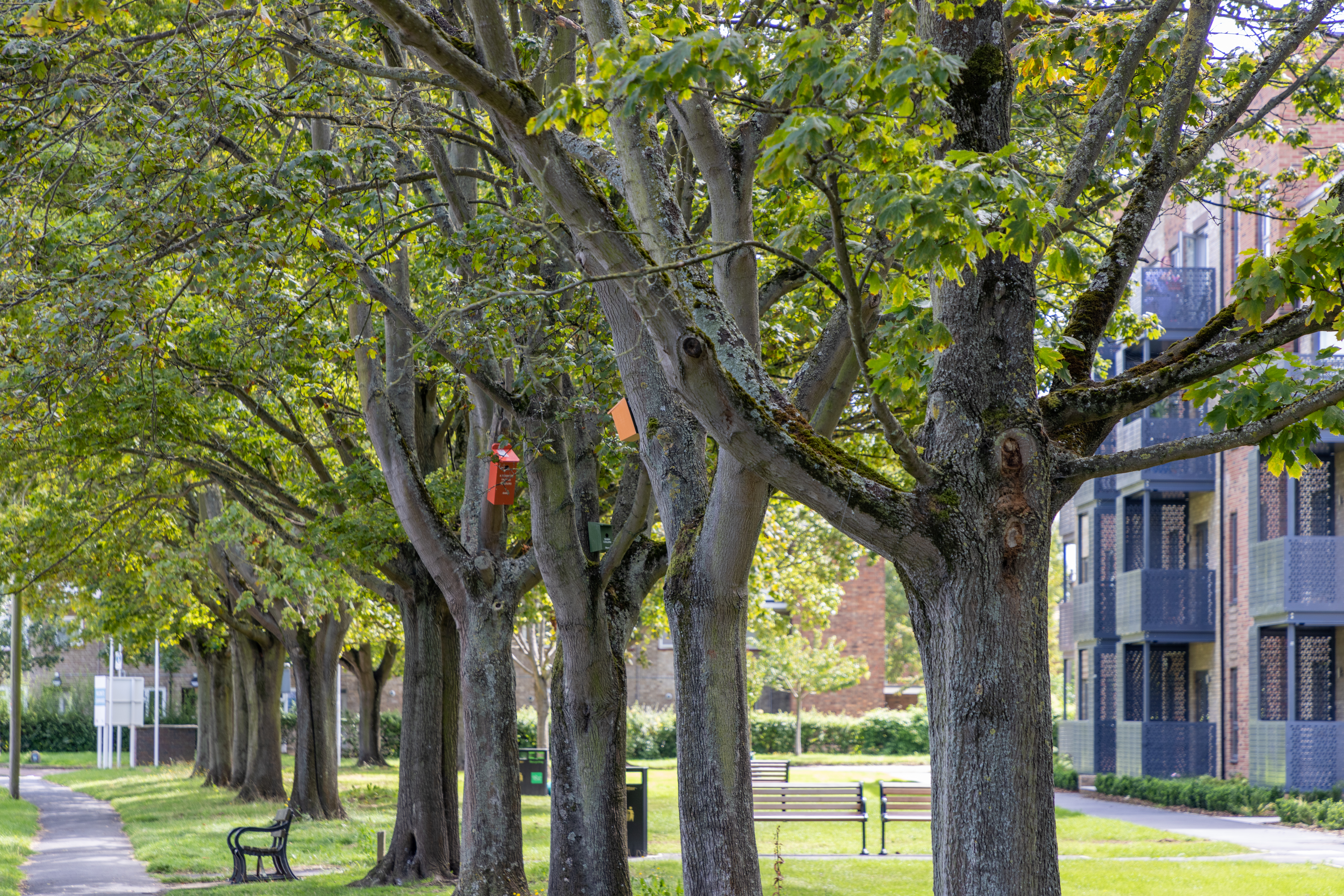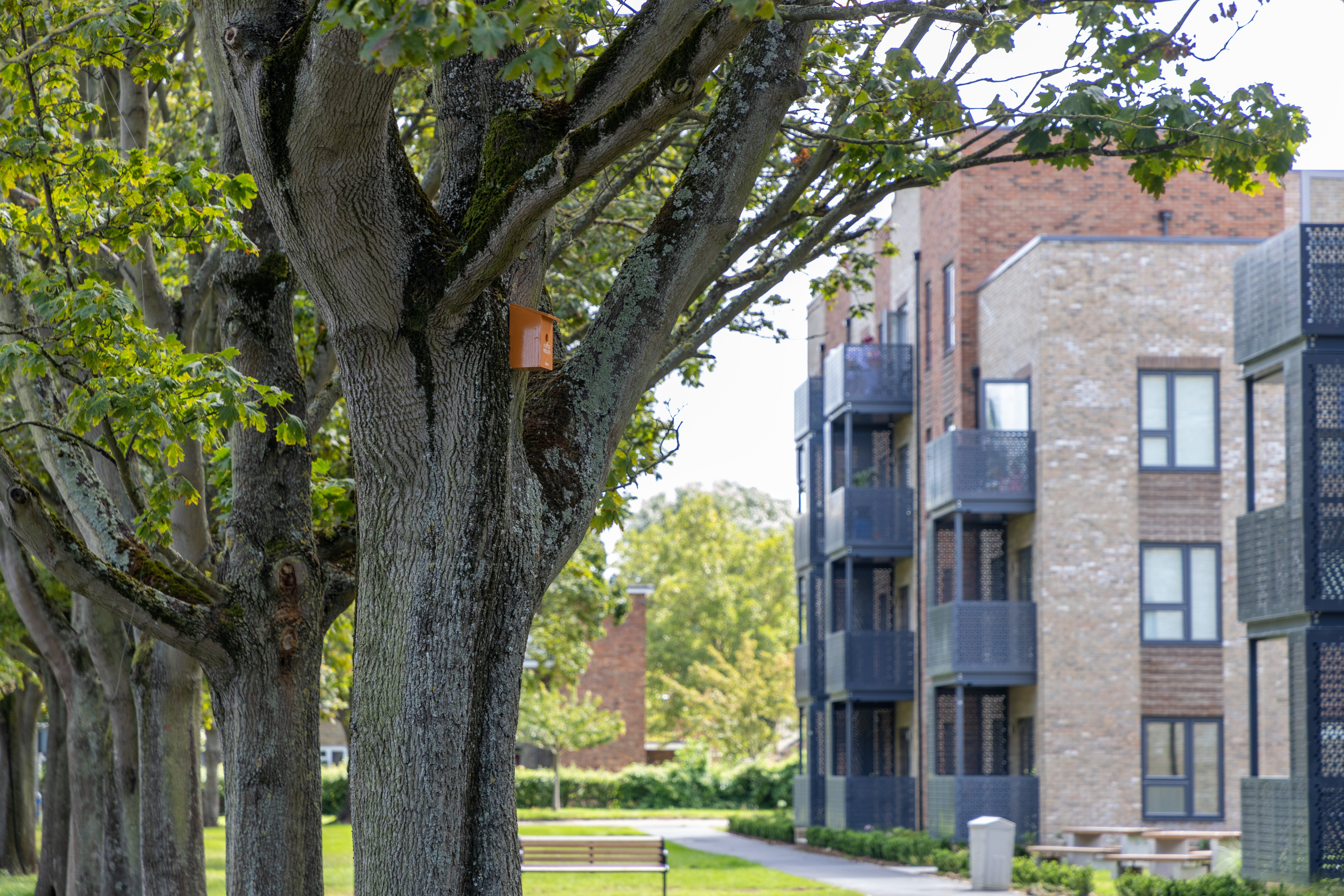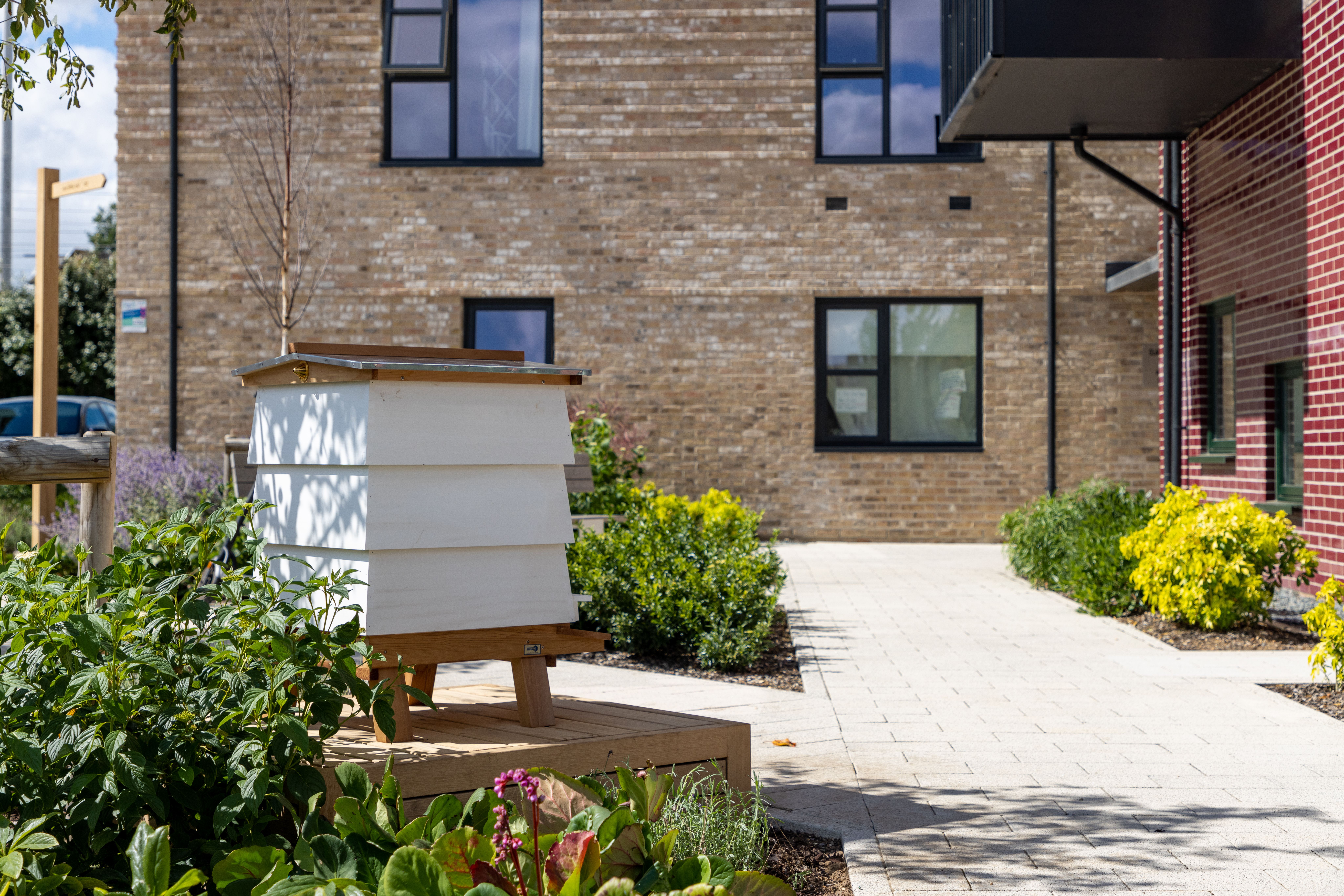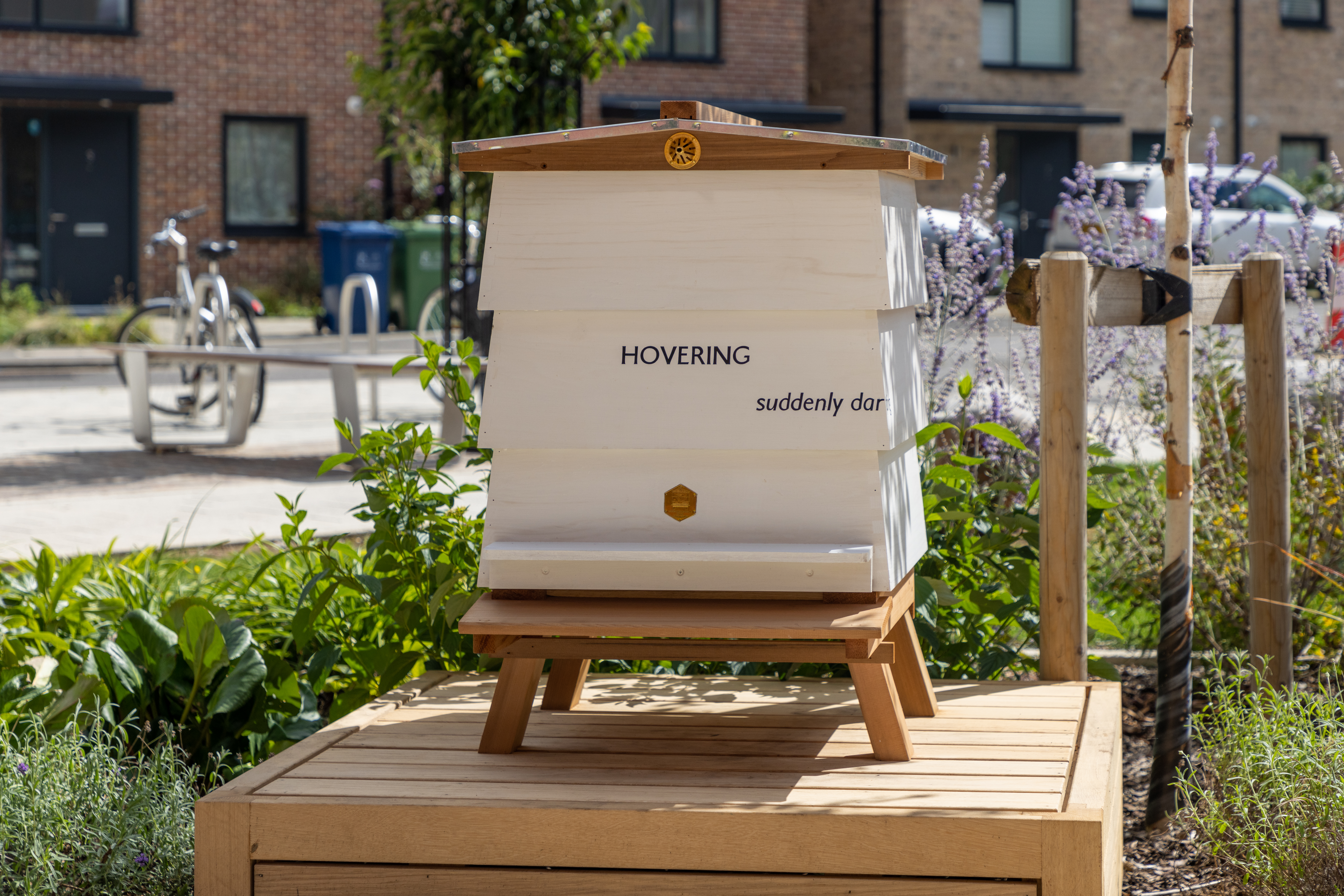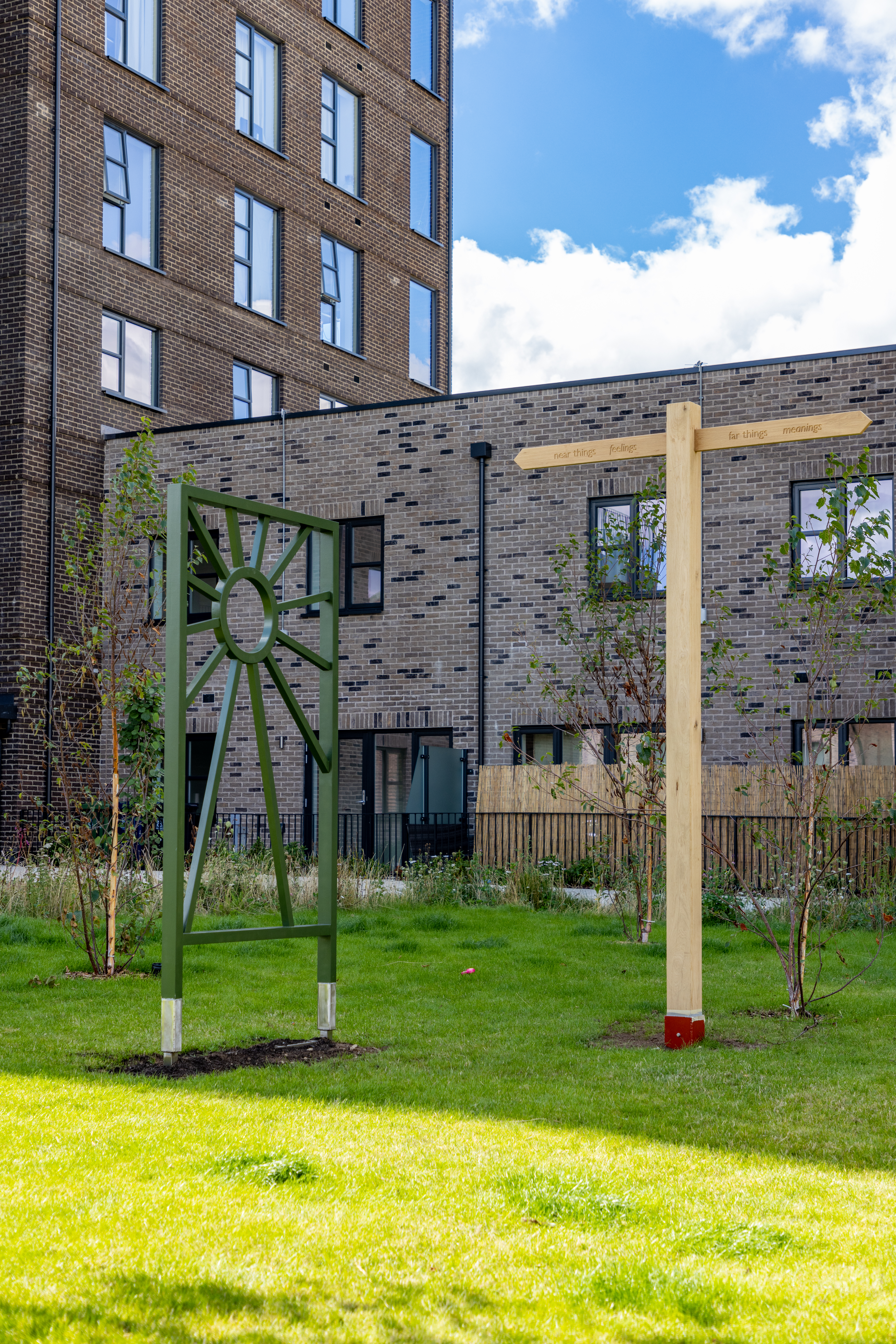In addition to delivering new council-rented and private sale homes across the city, we are leading an extensive public art programme across its developments, under the title ‘Resonance-Cambridge’.
The programme involves the commissioning of talented artists to deliver a range of talks, walks, and workshops with the local community that are then used to inform the design and character of artworks for the new public open spaces at the developments.
One artist extensively involved in this programme is Edinburgh-based poet and mixed-media artist, Alec Finlay. Alec was appointed by the partnership to create a series of works that serve to link the developments together.
Alec comments, “I have been working on the project since 2020. I was approached and asked if I would be interested in working in Cambridge across CIP’s developments to bring some integration and pattern to them. “When you work in a public realm, whether it is a landscape or urban situation, your brief is to enhance a place and community. I look at how art might be used to help build that sense of community and give people a greater sense of belonging. “The idea of connecting these different housing developments in the same city really interested me. I wanted to come up with something that would work across these sites whilst thinking about Cambridge itself and the mix of private and public homes being created. That was really the brief for me, and the conversations I would have with the community were more important than any kind of written statement. It was about the feel of what they wanted to achieve.”
Alec’s art installations include a series of beehives, sundials, nest boxes, and signposts, each adorned with a unique poem and located across five of our developments: Timber Works, Ironworks, Colville Road Phase 2, Campkin Road, and The Meadows and Buchan Street.
He continues, “I am a poet who makes art. I have taken the approach of using ordinary things that people will recognise – like a beehive – and sometimes people are unsure if it is art. What I hope is that when they see the beehive, it will give them fondness and make them think, that is a good thing as it is a home; it also gives us honey and helps nature too. Art doesn’t have to be a stranger.
“On each object, I have created one-word poems. I try and work with how language can be a family of meanings, such as talking about seasons, sunsets, and sunrises, and bring that commonality across the developments.
“Art isn’t only the sculpture; but it’s the relationship to the planting around it, whether it’s trees, lavender, bees etc. I chose to work in a series of simple forms that everyone would recognise and connect with, and that I could repeat on each development. Things like a beehive, which is a beautiful object that everyone knows, or signposts and nest boxes. I have added a poem to them and created a family in one place with its cousins, aunts, and uncles in another.
“Once I have finished, I hope to make a map with a key to where the poems and artwork are across Cambridge to allow the community to see all the poems with the different colours and meanings and create a different way to enjoy the city.”
Alec concludes, “What really counts now in our world is how we all belong together – if art can be part of that sense of belonging, that would make me feel happy.”

